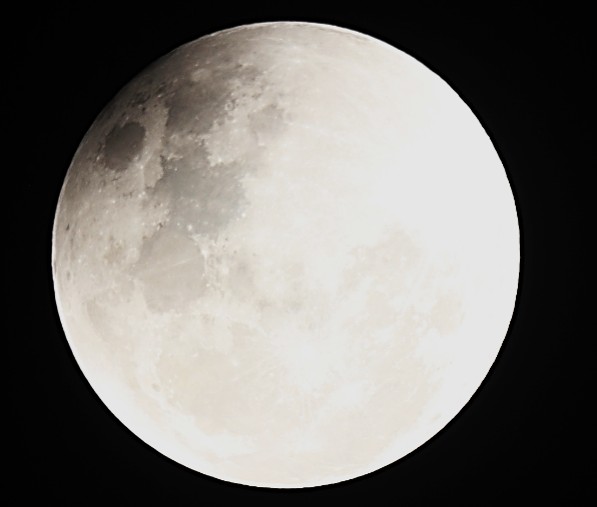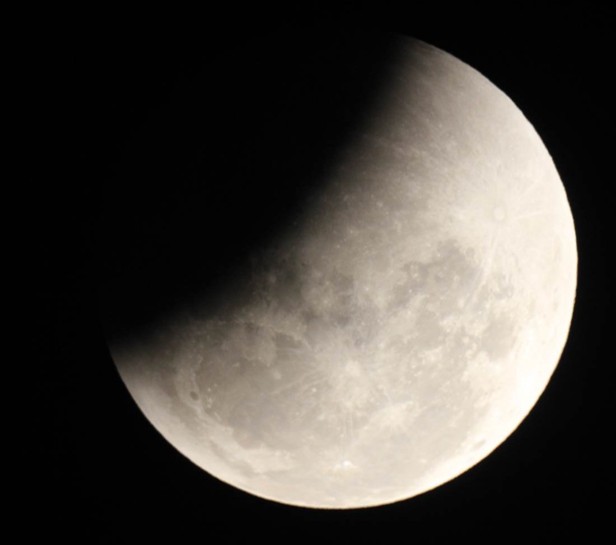Celestial Event
Partial Lunar Eclipse – August 7, 2017
Published on August 1, 2017 by Mr. Narendra Gor, Kutch Astronomy Club (StarGazing India)

The Partial Lunar Eclipse of August 7, 2017, was the only visible lunar eclipse of the year for India. Astronomy enthusiasts across Gujarat and the country awaited this rare celestial phenomenon with great excitement, as it provided both an opportunity for scientific observation and cultural reflection.

🌕 Timings of the Eclipse (IST)
- Start of Eclipse (First Contact): 10:52 PM
- Maximum Eclipse: Around 11:50 PM
- End of Eclipse (Last Contact): 12:49 AM (8th August)
- Total Duration: 1 hour 47 minutes
This made the event comfortably visible during nighttime across India, Asia, Africa, and Europe, making it a truly global spectacle.
🌒 What is a Lunar Eclipse?
A lunar eclipse occurs when the Earth passes between the Sun and the Moon, casting its shadow on the Moon’s surface.
- Solar Eclipse: Occurs when the Moon’s shadow falls on Earth.
- Lunar Eclipse: Occurs when Earth’s shadow falls on the Moon.
For centuries, eclipses were surrounded by myths and superstitions, with people believing that a demon or “monster” was swallowing the Sun or Moon. Today, with the advancement of astronomy, we know eclipses are simply natural celestial alignments, part of the cosmic dance between the Earth, Moon, and Sun.
🔭 Observing the Eclipse
Unlike solar eclipses, lunar eclipses are safe to watch with the naked eye. No filters or special glasses are required, making them accessible to everyone. In fact, they can also be photographed easily with cameras or mobile phones.
Astronomers and clubs across Gujarat planned:
- Scientific observations of the Moon’s brightness reduction.
- Telescope tracking of eclipse phases with accurate timings.
- Photography experiments, capturing each stage of the eclipse.
- Public awareness sessions, explaining the real science behind eclipses.
“We must celebrate lunar eclipses as fascinating celestial events, not fear them due to old myths. Science helps us see eclipses as windows to understand the cosmos better.” — Mr. Narendra Gor, President of the Kutch Astronomy Club
🌍 Significance of the 2017 Lunar Eclipse
- The February 2017 lunar eclipse was penumbral (too faint to see clearly).
- Both solar eclipses in 2017 were not visible in India.
- Thus, the August 7 Partial Lunar Eclipse became the only eclipse visible in India that year, making it highly anticipated.
🌌 A Call for Scientific Approach
StarGazing India and the Kutch Astronomy Club appealed to the public to observe the eclipse with a scientific mindset:
- Avoid myths of eclipses being bad omens.
- Engage in photography, telescope observations, and skywatching.
- Use this opportunity to inspire students and children toward astronomy and STEM education.
✨ Conclusion
The Partial Lunar Eclipse of August 7, 2017, was not only an astronomical delight but also a chance to bridge science with culture. With increasing public participation, India continues to nurture a scientific temper while cherishing the beauty of celestial events.